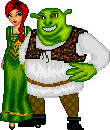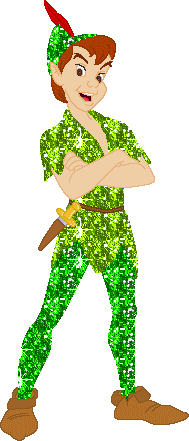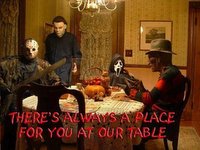DreamWorks Animation SKG emerged in 2004, along with its most successful film sequel Shrek 2.the "biggest CGI movie ever, grossing £470million"[1], becoming Disney’s biggest competitor. Unlike most animated films, it challenged the normal codes and conventions expected from this genre by using Levi Strauss’ theory through reversing the binary opposition, making an ogre a “hero” and the fairy godmother a “villain” in Propp’s character roles. This could be down to post modernism as they don’t believe traditional values.
Saturday, December 30, 2006
DreamWorks Animation SKG emerged in 2004, along with its most successful film sequel Shrek 2.the "biggest CGI movie ever, grossing £470million"[1], becoming Disney’s biggest competitor. Unlike most animated films, it challenged the normal codes and conventions expected from this genre by using Levi Strauss’ theory through reversing the binary opposition, making an ogre a “hero” and the fairy godmother a “villain” in Propp’s character roles. This could be down to post modernism as they don’t believe traditional values.
Friday, December 29, 2006
" I told you ogres don't live happily ever after!"
How are heroes/heroines and villains typically represented in contemporary animation films? Paying close attention to Shrek 2 (2004)
or
"I want what any princess wants - to live happily ever after… with the *ogre* I married."
How are heroes/heroines and villains typically represented in contemporary animation films? Paying close attention to Shrek 2 (2004)
Villains come in all shapes and sizes, but in popular art there are a few sure fire methods to help people identify who the enemy is.
With the wicked Queen from Snow White, again we see the fang shape in the collar of the cloak, and the narrowed, tricky eyes. The mouth too reveals constant displeasure. The heart shape of the face does not relieve the feeling of malevolence.

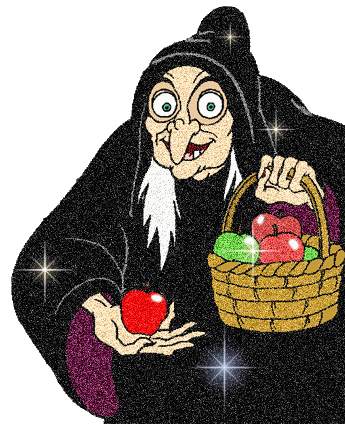 And when she turns into the witch, a new set of
And when she turns into the witch, a new set ofCharacteristics come into play: The eyes this time are large, but the irises and pupils are lost in them, appearing small, and giving the cue that you are not
Liked. Fang shapes appear in the way her hair hangs in tufts, in her nails, and in rounded form in the nose, mouth and chin. Angry brows are often present.
The sideways look also makes her look shifty. The ugly gaps in her dentition and the wart on her nose add little to the appeal, indeed, they constitute another sentic form – the bringer of disgust.

Interesting to compare the eyes
and the downturned mouths in Snow White’s Queen,and the Stepmother in Cinderella. And the appendages to her head designed to give greater height and impressiveness.

In the Sleeping Beauty, the malevolent force here also reveals the fang shape in the horns on her head, and the shapes of her cloak drapery. Her companions too reveal these shapes – the crows in the shapes of the beak and wing feathers. And she turns into a quite magnificent dragon.
And in the magnificent Cruella de Ville – pointy cheekbones, chin, and mouth corners. Often angry brows, and fanged hair and nails.

And then there is the legendary Captain Hook. Not much here in the way of fang shapes – a hint in the eyebrows and moustache, the pointy chin and nose, and of course the hook itself. But here the main message is carried by wilful chin and posture, the clenched fist and angry brow and mouth.
http://www.wavecrest.org.uk/wavecrest/Quest%20tease%2010.htm
My independent study focuses on the representation of how heroes and villains are typically represented in animated films. I decide to use shrek 2 as it is a post modern text and it subverts the usual expectations of a typical hero as shrek is an ogre, where in more liberated times he would have been seen as a villain. Furthermore, in shrek 2 they use a transgender bartender, which in the past would have not been allowed in a children’s animated film as it would be seen as unacceptable as the values were more conservative.(R,G,I)
Other texts: (recent)
I will be looking at which challenges/conform to the typical roles of the hero and have similar/different ideologies to shrek (I)
“Hoodwinked” (computer animated film) (G)
Stereotype of grandma being helpless instead she is outrageous thrill seeker who would just as soon be skydiving and snowboarding as sitting in her rocker.”
The wolf being a predator /villain instead he is a more complex and comical character.
The villains are Boingo (the cute and fluffy bunny) and his henchmen (least expected.)
Red riding hood is typically known as endangered little girl without much to say for herself but in hoodwinked she is a teenaged rebel with her own hopes, dreams and tough-as-nails attitude.
Traditonal characters are used to challenge the stoerotypical roles and this is done to creates humour which is done by mixing modern and fantasy culture. (R)
Beauty and the beast as it similar to shrek 2 (Disney animated film) (G)
A handsome and popular, but crude and arrogant, man named Gaston wants to marry Belle similar to prince charming wanting to marry fiona.(N)
Belle loves the Beast enough to see past his outer ugliness similar to shrek 2 as fiona loves shrek and doesn’t care about his looks.(N)
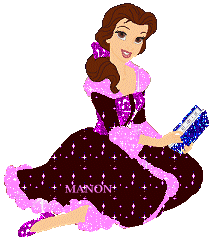
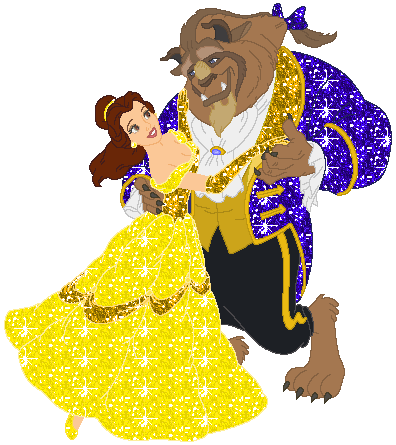
Shrek and beast are ugly in contrast to bella and fiona who are represented as beautiful.-binary oppostition(N)
Mulan – active heroine goes against stereotypes
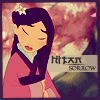
How they are typically represented:
· Princess Fiona is represented as the typical princess from fairy tales, speaking formally in matters of courtship and presenting high expectations of how she is to be rescued, who is to rescue her.
· The heroine is usually a princess/the hero is usually a prince (Disney films)
· The heroine is passive e.g. Cinderella, sleeping beauty, snow white
· The villain is scary, evil, funny looking. The colours they are frequently dressed in are dark purple/blue, black and green.
· The female heroes are subordinate to men- like in shrek 2, shrek drives the narrative forward.
· The villain is supernatural being or an animal
· Eddie Murphy put in the comedian role “black entertainer”,” racial/black clown” like in "shrek 2" and "shrek" he plays donkey
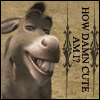
· Shrek has to conform to being “handsome” in order to be accepted
· Shrek could be seen as “the other” to the people in the kingdom
· The villains are seen as the “the other”
· Stereotypes used e.g women in domestic tasks/housewives
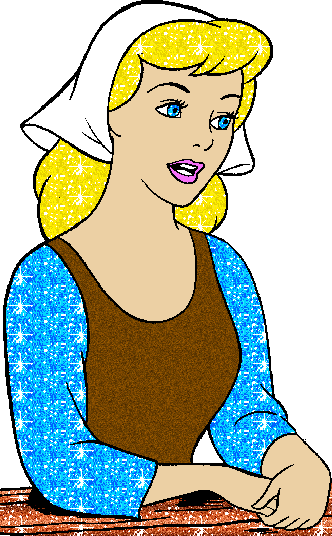
· Narrative roles used (prop)
· Genre expectations are fulfilled
Keywords I need to use:
Ø Hegemony
Ø Marxism
Ø Marxist capitalism-media and culture industries reinforce traditional gender roles and support the status quo by the dominant ideology
Ø Traditional values
Ø “Femme fatale” is a typical role used for a female villain this helps promote misogyny as the young audience and adult audience are encourage to hate women.
Ø Mainstream
Ø Male gaze-Laura Mulvey
Ø Passive audience
Ø Right wing
Ø American dream
How they are not typically represented:
.+.Mulan and princess Fiona are active heroines
.+.The beast and shrek are not seen as villains even thought they are seen as “ugly”
.+.Heroines are usually pretty
.+.Mulan is an ethnic minority which is not usually shown in many animated films.
.+.Bartender could be seen as a villain as he works in “the poison apple” where all the villains hang out, however they are shown in a more comical way rather then scary.
.+.Challenges stereotypes-encourage social change
Keywords I need to use:
Ø Pluralistic
Ø Progressive values
Ø genre expectations are subverted
Ø Myth- Shrek an ogre can be seen as a myth as he in underpinning a set of cultural assumptions.
Ø Going against the norms of society
Ø Post feminism
Ø Post modernism
Ø Left-wing
Ø Deviance-behaviour that turns away from the norm of which is generally accepted in society.
Other keywords I need to use overall:
Ø Binary opposition-(Strauss) audience are positioned in narratives to take sides and rewarded by the success of the side they identified with.
Ø linear narrative structure-(Todorov)
Ø parallel action
Ø parody
Ø pastiche
Ø prejudiced
Ø prequel
Ø protagonist
Ø alienation-emotional separation
Ø antagonist
Ø Anthropomorphism-the attribution to animals/inanimate objects of human feelings, emotions and other characteristics. This is done to help engage the audience with the experiment of animal characters.
Ø Archetype-an often repeated character type or representation which is instantly recognisable to an audience.
Ø Utopia-idealised world where everything’s perfect. Dyer sees these genres as offering fantasy escapism from everyday life problems and routines.
Ø Blockbuster
Ø CGI-computer generated imagery
Ø Cultural imperialism- the dominance of western/us society cultural values across the world.
Ø Disneyfication-removal of controversial sexual, morally ambivalent or violent content so that it is made suitable for family viewing.
Ø Genre theory-explains the appeal to audiences. Key theorist is Richard Dyer.-audiences are offered abundance, energy, excitement, spontaneity and community which are not presented in our daily lives.
Ø Golden age-an ideal period in history which looked back on wit nostalgia. The golden age of Hollywood films was 1930-1948
Ø Institution
Ø Knocking copy-newspaper articles which give negative, unflattering or embarrassing events in order to criticise individuals in the public eye. E.g. the royal family in the tabloid press.
Audience theories I will include:
I think the uses and gratification can be used for my main text which is Shrek 2 as it suggests the reason why the audience watch the film is for entertainment, escapism as it the sub genre is fantasy, moreover it is humorous because its subverts the convention of fairytales. On the other hand, the effects theory can also be applied as it is an American text American ideologies and values are likely to be picked up. I think the reception theory can be applied as well as the children are likely to pick up the hegemonic reading, whereas an adult or a teenage may grasp a negotiated reading or an oppositional reading. (A)
For representation of heroines Mulvey's Theory (R)
Feminism (R) how it is changed as Fiona (heroine) challenges how a typical women should look like. Therefore going against society’s “status quo”. (I)
Freud (A)
Pleasures audience get from watching animated films:
Identification with main protagonists
Nostalgic feeling from shrek, shrek 2 and hoodwinked
Scopophilic- from looking
Appeal of stars/celebrities
Entertainment
Escapism
Why heroes and villains are used?
To help audience identify
They may feel cheated if theses binary oppositions are not used
Friday, December 15, 2006

Feminism in disney films
At the forefront of their argument is an apparent desire to keep the heroine portrayed as a homemaker, and generally dependent upon males. While it is agreed that the early female characters, such as Snow White and Cinderella, were reliant on males, and generally possessed submissive qualities, there has clearly been a transformation since that time.
Godmothers:
The godmothers have been fairies, witches, and goddesses in the numerous variations of the story. In some Christian religions, a godmother is a "woman who sponsors a child at baptism and assumes responsibility for the child's religious guidance up to confirmation" (Websters 1990). In a more general sense, a godmother takes responsibility for caring for a child physically, emotionally and mentally.
In my texts:
Shrek 2:fairy godmother goes opposite of the norm as she doesn’t care about Fiona emotionally as she is not empathetic and sympathetic because she doesn’t accept Shrek even thought Fiona loves him. Instead she wants her son to marry Fiona, so she puts herself before Fiona which is not very caring.
Cinderella: fairy godmother helps Cinderella get to the ball so does care for her emotionally as that makes her happy. 
Sleeping beauty: there are numerous fairies, 3 good ones and one bad one which is the villain of the film.
Peter pan: Tinkerbell is a fairy but not a godmother. 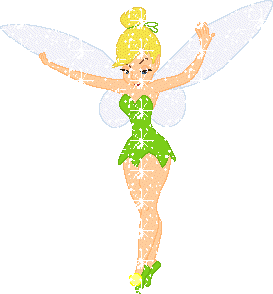
101 Dalmatians: no fairies/godmothers 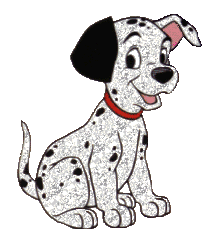
snow white and seven dwarfs: no fairies/godmother 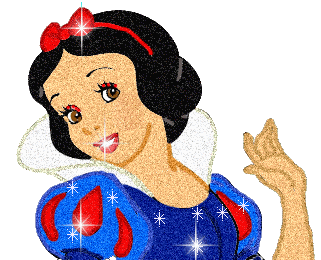
Representation of heroes/heroines:
Most beautiful person in the world:Physical beauty is always important especially in female characters. The human race has been obsessed with physical beauty most likely since it began. However, this gift is given first which implies that it is not as important as the gifts which follow. Still, we know that this princess will be beautiful and thus physically desirable.
Shrek 2: goes against this as Fiona is an ogre wife
All other historical texts this is applicable to this statement.
How heroes/heroines and villains are represented in disney animated films?
In fact, Disney’s idealized worlds rest largely on the artfulness of animation: good characters (e. g., Simban, the Sultan, Ariel, Pocahontas) display youthful traits such as big eyes and round cheeks (Lawrence 67) and are drawn in curves, smooth, round, soft, bright, and with European features; villains (e.g., Scar, Jafar, the Hun, Ratcliffe, Ursula) are drawn with sharp angles, oversized, and often darkly. Animation has available the same artistic capacity as illustration, where colour, shape, and size evoke certain psychological responses and attitudes towards an object.
Audience: (freud)
When fairy tales came into being "princes and princesses were as rare as they are today, and fairy tales simply abound with them. Every child at some time wishes that he were a prince or a princess--and at times, in his unconscious, the child believes he is one, only temporarily degraded by circumstances. There are so many kings and queens in fairy tales because their rank signifies absolute power, such as the parent seems to hold over his child. So the fairy-tale royalty represent projections of the child's imagination" (Bettelheim 1975).
Animation and audience:
Animated motion attracts our attention, mitigating its graphic fiction. Children, in particular, are attuned to animation because it visually stimulates their emotions (Moellenhoff 105) and Disney has shown itself "capable of understanding the way that children think and feel better than any other filmmaker" of our time (Rosenbaum 69). Observe any pre-schooler or grade schooler watch Disney–their eyes are wide and their bodies quake; laughter is spontaneous and fright discernible (Takahashi, 1991). As Bjoerkqvist and Lagerspetz (1985) found, children respond cognitively and physiologically to the meaning of the animation.
For children, animation pierces the consciousness and physical existence with experiential meaning, creating a realm of understanding unavailable via literacy or non-cinematic physical activity. Adults likely interact with cinema in a similar, though less transparent manner, given their socialization to self-control and public self-consciousness. Of course, viewers, young and old, recognize animation as fictive, not real: it’s just a cartoon! However, reality and fantasy do not compete in Disney, but "unite in a droll way" (Moellenhoff 114) exempting the stories from fidelity to extant or historical conditions.
Values and ideology:
Disney animations are unequalled in their narrative loyalty to dominant ideology and cultural values, consistently leading audiences to "realistically" believable fantasy lands. In the Lion King, for instance, Disney relies on our continuing cultural affection for royalty. Close attention to the narratives and character traits suggests that although Disney animations remain "naive, childlike, even childish" (Moellenhoff 114), they are not the fairy tales of imagination that children need (Bettleheim, 1977), nor are they socially progressive. Rather, Disney animations are self-contained confections mass-produced by adults writing, selling, and promoting themes for product licensing and private profits (Herman & McChesney 54)–with consumerist values and ideologies supportive of capitalist globalization.
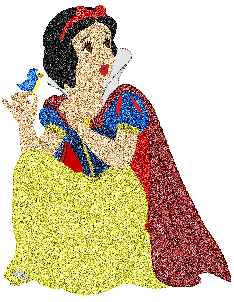 Snow White and the Seven Dwarfs (1937 film)
Snow White and the Seven Dwarfs (1937 film)
Representation:
The Queen is a fictional character in the Snow White and the Seven Dwarfs fairy tale and the Disney animated film based on it. The Queen was often referred to as "Queen Grimhilde" in Disney publications of the 1930s.The Queen is extremely beautiful but very evil and very proud and vain. She seduced and married a widowed King who had a daughter called Snow White with his first wife.(femme fatale) After the King died, the Queen sent Snow White to work in the castle and forced Snow White to abandon her title as Princess, similar to the situation of Cinderella.Aside from being the first ever classic Disney villain, the Queen holds symbolic status above the rest of the Disney villains and is regularly seen as their leader - although the most powerful is traditionally Maleficent, even she follows the Queen.The Queen ranks #10 in the American Film Institute's list of the 50 Best Movie Villains of All Time.
Wider context:
Snow white can cook all of the dwarfs’ favourite meals, and would clean their house while they are away. A feminist critique of the film or fairy tale quick to point out the creation of a subordinate role for the woman by the protective male hegemony. This would lead feminists to label the film as anti-feminist, with the usual paternal ideology driving the story.
Before Snow White, Grumpy had control over the dwarves, and realized his homo-erotic sexual fantasies by isolating the seven of them from the world of women to conduct their own drunken homosexual orgies. As twisted as this may sound, Disney is merely portraying the societal structure of a world at war, when the male and female spheres are divorced from each other by distance, and homo-erotic bonds grow between the males and separately between the females.
It is obvious the queen hates men- the only one in her court that we see is the huntsman, rudely ordered to do the queen's bidding as a slave. The queen operates as the dominant matriarch in a system excused of any sort of patriarchy. Men seem all but expelled from her kingdom.
Therefore, Cinderella's wicked stepmother cunningly chooses her words with care and -- unlike her awkward daughters -- never lets her temper get the best of her. She simply smiles an icy smile and handles matters in her own way ... behind the scenes.
Representation:
Cinderella uses everything short of physical force to persuade her stepmother that she has every right to attend. This makes her one of the more memorable Disney heroines. Actress Helene Stanley performed the live-action reference not only for Cinderella, but also for Princess Aurora in "Sleeping Beauty"
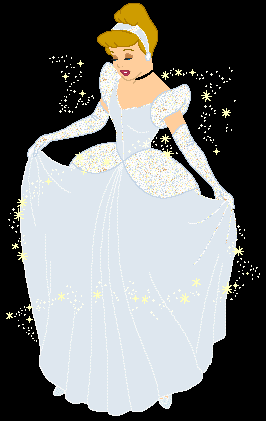
Until this movie, the role of Peter Pan had always been played by a young woman. Instead, Walt Disney chose to portray him as a 12-year-old boy. Disney explained the age by saying, "He is 12 years old forever simply because he refuses to grow up beyond that comfortable age."
Audience:
There are numerous other differences, including the revision of Tinker Bell's "death" (whereas in the original play she gets knocked out by a poison, in the animated film she gets knocked out by a bomb), which can be attributed to Disney's history of artistic license and reshaping of content to be more suitable for younger audiences.
Representation:
Tinker Bell (who wears a slim, green dress, slippers, and yellow panties) owes her shapely form to the Pin-up girls of the war.
Representation:
The version of Captain Hook who appeared in the Disney animated film adaptation of Peter Pan was a cowardly fool, Though he has his evil moments, Hook is overall a comically inept villain compared to other Disney villains such as Jafar or Maleficent. He apparently loves loopholes — after he promises Tinker Bell that he will not lay a finger (or a hook) on Peter, he then lays a bomb in Peter's hideout, since he didn't say he wouldn't do that. Captain Hook appears briefly in the animated film Shrek 2, where he plays the piano in a tavern, representing the musician Tom Waits who wrote and performed the song in question, Little Drop Of Poison.
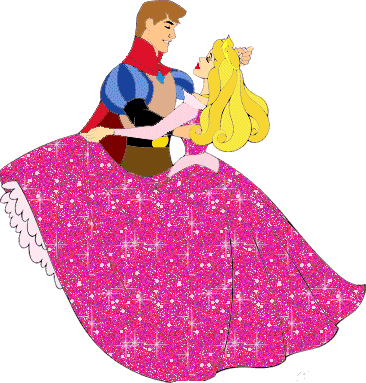 Walt Disney's Sleeping Beauty(1959 film)
Walt Disney's Sleeping Beauty(1959 film)
Representation:
Maleficent finds her target and strikes. Savouring her victory over the weeping good fairies, she gloats, "You poor simple fools, thinking you could defeat me, me! The mistress of all evil." But Maleficent had best not underestimate her moral challengers. Maleficent's fearfully unkind persona was voiced by Eleanor Audley, who had previously performed Lady Tremaine, the wicked stepmother in "Cinderella" (1950).
Princess Aurora's long, thin, willowy body shape was inspired by that of Audrey Hepburn. (Model)
Disney, in their version of Sleeping Beauty, creates the Princess Aurora as the epitome of womanhood and femininity, while Maleficent is her exact inverse. The structure of the Sleeping Beauty tale gives Disney the perfect opportunity for designing Aurora as the ultimate woman. The fairies are each supposed to give the girl a gift at her birth that will make her the picture of perfection. In Disney's Sleeping Beauty, the first fairy grants her beauty, including "lips that shame the red, red rose" and "sunshine in her hair." Maleficent, in contrast, has a sharp, pointed face, sneering lips, and no hair at all. The gift granted by the second fairy is the gift of song. Princess Aurora has a beautiful, melodious voice, while Maleficent's voice is scratchy and low.
Throughout the movie the direct contrast between Aurora and Maleficent is very apparent. Maleficent is drawn surrounded in gloom, dressed all in black, her face a pale and hideous shade of green; Aurora, with her soft pink complexion, wears light blue dresses and is surrounded by sunshine. Maleficent sits, smoldering with rage in a distant, gray castle, encircled in storm clouds, while Aurora waltzes about in the warm, green woods. Aurora converses with cute, furry animals; Maleficent lives among dim-witted, boorish, troll-like henchmen. (Binary opposition) Maleficent is active and clever and unruly. She is toweringly tall and devoid of feminine feature (such as hair) and the complete opposite of the standard of feminine beauty set by Aurora.
She is a lonely woman. The three "good fairies" have each other and are motherly figures who end up raising the princess, but Maleficent is without anyone. As the green fairy, Fauna, explains: "Maleficent doesn't know anything about love or kindness or the joy of helping others." A woman's life should revolve around love and the joy of helping others, but these are qualities in which Maleficent is deficient. By presenting Maleficent as unwomanly, Disney is able to make her a monstrous anomaly and therefore to deny the threat of feminine power. (Feminism)
maleficent is sourround by green flames this connote her jealousy and fury when she is not invited to the birth cermony of princess aurora. she is given horns which connotes that has devil like qualaties. around her neck it looks like bat wings which is animal which not very liked. they use the diegetic sound of thunder when maleficent appeared this was because this would frighten children and make them feel alienate towards her. as she lived in the "forbidden mountain" which was isolated from the kingdom where it was dark,gloomy and thundery potraying malaficent personality.also the music used when malaficent would appear on screen would be loud dramatic music.furthermore, as she lived at the top of the mountain its could connote how she is superior and powerful.
aurora is shown sweeping/cleaning at the age of 16 which in more liberated times she would be seen as an adult in other words a women this was shown to represent the sterotypical role women had back then.
Representation:
The prince must fight his way through the thorns, hacking them to pieces valiantly with his sword. Upon surpassing this obstacle, he must then deal with the evil Fairy. She assumes the form of a horrible dragon (black and green, of course), and they do battle, whereupon the prince kills the dragon. This represents a considerably more significant effort on the part of the prince, as well as creating a sort of test to demonstrate that he is truly worthy of the princess.
Audience:
It also serves to put some action into a tale otherwise devoid of any violence, again appealing to youths who are used to action-packed cartoons.
Audience:
By making Maleficent an inherently evil person, Disney sets up an evil for the audience to hate, and thus an easier conflict to identify. Disney seems to consider this especially necessary in dealing with young children. It makes all the sticky moral questions go away, and the children can simply hate the witch.
Young girls watching the Disney version of Sleeping Beauty see an outlet for their feelings of strength and power in Maleficent at the same time they desire to be like the ideal set for them in Aurora. They come to feel this good woman/bad woman dichotomy within themselves-- and to believe these are two separate selves which are incompatible with one another. Disney makes the "good woman" and the "bad woman" so separate-- such complete, binary opposites-- that it seems impossible that they can co-exist within one person. A girl ends up feeling that in certain situations she is one, and in other situations she is the other; she aspires to be like the ideal woman, presented in Aurora, but she enjoys using power like Maleficent. She will see a division between the kind and loving, and the powerful and strong within herself, rather than seeing the combination and the way they work together within her and combine to create one, complete personality.
theorys:(Freud and Mulvey theory applied)
Spindle in sleeping beauty: A spindle is "the thin rod in a spinning wheel serving to twist and wind the thread" (Websters 1990). The spindle can have a shape tip and usually does in illustrations of the story. In psychological interpretations of this tale, the spindle is considered to be a phallic symbol.
Wider context:
Fairy tales were used by a number of parties in the Weimar Republic as political propaganda, primarily in order to indoctrinate the youth to the party line. The Social Democrats, the Communists, and the National Socialists all used fairy tales extensively. The messages contained in fairy tales such as the Grimms' were particulary useful for conservative groups, because classic tales such as "Cinderella" and "Sleeping Beauty" "reinforced the patriarchal order and gender specification in German upbringing." Because they were already well-suited to the message some political parties wanted to convey, "as far as young listeners and readers were concerned, the fairy tale came to be used in a conservative sense that had political overtones."
The Social Democrats and Communists attempted, largely unsuccessfully, to write new tales or rewrite old ones in order to introduce their own morals, social views, and political agenda into children's literature. These were not very successful for a number of reasons, including the fact that audiences of the tales did not appreciate having new endings tacked onto their classic tales, and preferred tales which did not represent a challenge to the status quo.
In addition to indoctrinating young people, fairy tales like "Sleeping Beauty" became a form of political propaganda which bolstered the Nazis' popularity among the general populace. By comparing Hitler to heroes in beloved, univerally known tales, the Nazis shored up support for their political activities and reinforced the image of Hitler as the unerring Führer. An example of this sort of glorification is Adolf Holst's Der Drachentöter ("The Dragonslayer"), in which Hitler is the prince who battles hell to free the princess (Germany) and wake it up -- "and all of the people cried out: 'Heil!'"
the film also helps reinforce the status quo by using the song lyrics of "hail to the king,hail to the queen,hail to the princess aurora." this is a dominant ideolgy of respecting royalty which is reversed in shrek 2. as shrek does not respect royalty but is still seen as a likeable character.
One Hundred and One Dalmatians (1961)
Representation:
Cruella De Vil: The villain of the film; an eccentric rich woman who has the puppies kidnapped in order to turn them into fur coats. She is a social parasite; she visits her ex-classmates, keeping a pretence of friendship, while taking advantage of their fears.She'll do whatever she has to do to get those beasts and their coveted coats. And once in her evil hands, those puppies must never leave "Hell Hall" alive. Cruella may live for fur -- but the pups, well, she doesn't give much thought to them. Created by Marc Davis, talented animator of both Maleficent and Cinderella, Cruella is considered a masterpiece of animation art and design.
links:
http://en.wikipedia.org/wiki/Cinderella_(1950_film)
http://disney.go.com/vault/archives/villains/tremaine/tremaine.html
http://disney.go.com/vault/archives/villains/maleficent/maleficent.html
http://en.wikipedia.org/wiki/List_of_Disney_Villains
http://en.wikipedia.org/wiki/Peter_Pan_(1953_film)
http://en.wikipedia.org/wiki/Walt_Disney
http://en.wikipedia.org/wiki/Snow_White_and_the_Seven_Dwarfs_(1937_movie)
http://lass.calumet.purdue.edu/cca/gmj/OldSiteBackup/SubmittedDocuments/archivedpapers/fall2002/Artz.htm
http://www.gwu.edu/~folktale/GERM232/sleepingb/Disney.html
http://disney.go.com/vault/archives/villains/cruella/cruella.html
http://www.gwu.edu/~folktale/GERM232/sleepingb/Disney_vs_grimm.html
http://www.gwu.edu/~folktale/GERM232/sleepingb/Nicks_base_page.html
http://www.purewestmedia.com/writing/snowwhite.html
http://www.imdb.com/title/tt0053285/trivia
http://studentweb.tulane.edu/~mkuczyns/home.html
Thursday, December 07, 2006
The Golden Age of American animation is a period in American animation history that began with the apperance of sound cartoons in 1928, peaked during the mid 1940s, and continued into the 1960s when theatrical animated shorts slowly began losing to the new medium of television animation. Many of the most memorable characters emerged from this period including Mickey Mouse, Donald Duck, Goofy, Bugs Bunny, Daffy Duck, Porky Pig, Droopy Dog, Popeye, Betty Boop, Woody Woodpecker, Tom and Jerry, and the Pink Panther and an incredibly popular adaptation of Superman. Feature length animation also began during this period, most notably with Walt Disney's first films: Snow White and the Seven Dwarfs, Fantasia, Pinocchio, and Bambi.
http://en.wikipedia.org/wiki/The_Golden_Age_of_Hollywood_animation
Friday, December 01, 2006
Hollywood animations formulaic?
There is a clip on this site as well as information on how Computer-generated movies have led to a multi-billion dollar boom for US animation with hits such as Finding Nemo and Shrek.
